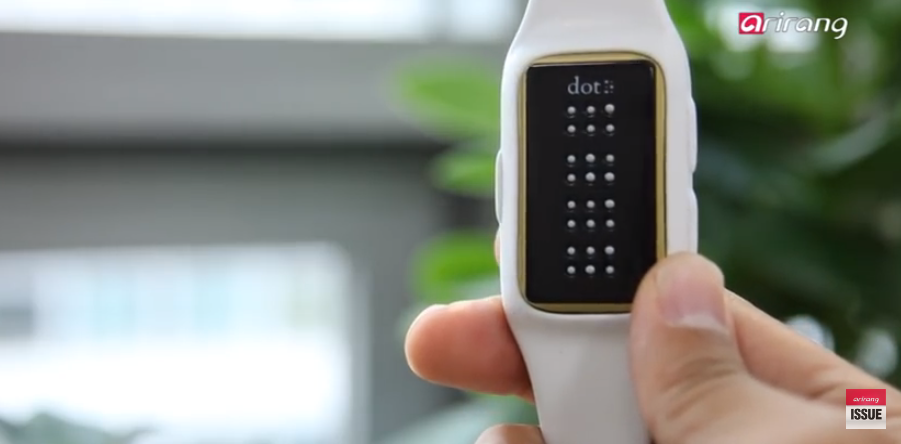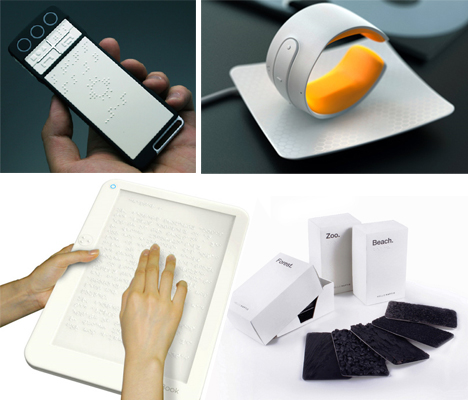OCR Devices for the Blind: Converting Text into Speech with Ease
OCR Devices for the Blind: Converting Text into Speech with Ease
Blog Article
Discover Ingenious Tools Made for the Aesthetically Damaged
The advancement of innovative devices for the visually impaired stands for a substantial development in availability and independence. Technologies such as clever glasses with AI abilities and mobile applications developed to supply auditory descriptions are reshaping day-to-day experiences for individuals. In addition, wearable gadgets that employ haptic comments enhance ecological awareness, while modern-day Braille advancements supply brand-new methods to involve with text. As these tools remain to evolve, their impact on the lives of those with visual impairments increases vital concerns concerning the future of inclusivity and freedom in different facets of life. What lies ahead in this technical landscape?
Smart Glasses for Navigation

Smart glasses made for navigation are changing the means visually damaged people interact with their setting. These sophisticated tools make use of a mix of cam technology, expert system, and auditory comments to provide real-time information concerning environments. By using barrier detection systems, wise glasses can alert customers to possible dangers, making it possible for more secure mobility in both familiar and strange setups.
The combination of GPS technology additionally enhances navigation capacities, enabling individuals to receive auditory directions as they relocate. This hands-free method not just cultivates independence however likewise encourages visually damaged individuals to navigate city landscapes with raised confidence. Furthermore, several wise glasses are outfitted with functions that determine sites and road indicators, providing contextual info that boosts the individual experience.
Additionally, the growth of these gadgets is constantly progressing, with firms working to boost the accuracy of item recognition and expand the series of navigational attributes. As smart glasses become extra economical and accessible, they hold the potential to considerably change day-to-day live for visually damaged customers. Inevitably, these innovative tools represent an essential action towards inclusivity, offering enhanced movement and a greater sense of freedom for people browsing the globe around them.

Mobile Application for Daily Living
Exactly how can mobile applications boost the lives of aesthetically impaired individuals? Mobile applications are changing the way visually impaired individuals browse their settings, handle everyday tasks, and accessibility information. These applications supply essential assistance via various capabilities, promoting self-reliance and boosting lifestyle.
Numerous innovative mobile applications are created especially for day-to-day living. Applications like Be My Eyes attach visually impaired customers with sighted volunteers using video calls, permitting them to get real-time assistance with tasks such as reviewing tags or navigating unknown spaces. Seeing AI, created by Microsoft, utilizes artificial knowledge to explain environments, read message, and identify items, efficiently transforming a smartphone into an effective device for daily support.
Additionally, navigation applications customized for the visually impaired, such as Aira and BlindSquare, offer audio-based instructions and ecological info, allowing users to traverse their environments safely and with confidence. Beyond navigating and instant aid, mobile applications additionally support company and task management, with attributes that assist users set tips, produce to-do lists, and track appointments. In recap, mobile applications work as vital resources, equipping aesthetically damaged people to lead more independent and satisfying lives.
Wearable Technologies for Help
Empowerment through modern technology is increasingly evident in the world of wearable gadgets created to aid aesthetically damaged individuals. These cutting-edge devices incorporate perfectly into day-to-day life, improving navigating and giving crucial feedback to users. For circumstances, wise glasses equipped with video cameras can identify faces and check out message aloud, permitting customers to interact more confidently in social and expert setups.
Another find out this here notable innovation is the usage of haptic responses systems in wearable gadgets. These systems make use of resonances or various other responsive signals to share details regarding the individual's atmosphere, such as challenges or changes in surface, boosting mobility and safety. Wearable technologies also consist of wristbands that link to mobile phones, notifying customers to alerts via subtle resonances, therefore improving connection without reliance on visual signs.
As these innovations remain to develop, they are not just improving self-reliance for aesthetically impaired individuals yet additionally cultivating a greater sense of inclusion in society. By bridging the void between challenges encountered in everyday living and the capacity for autonomy, wearable technologies work as essential tools in the pursuit for equality and empowerment for those with aesthetic problems.
Audio Summary Tools
Sound summary tools play an important role in boosting access for aesthetically damaged individuals, providing them with the ability to involve with visual media. Braille displays and notetakers. These tools use narrated descriptions of key aesthetic elements in films, tv programs, and live performances, ensuring that individuals can fully understand the context and feelings shared through visuals
Sound description can be integrated into numerous platforms, including streaming services, movie theater testings, and live movie theater. Numerous prominent streaming solutions now include audio summary as an accessibility function, permitting best opticians visitors to select it conveniently. Along with conventional media, specialized apps additionally exist, giving audio descriptions for art exhibitions, galleries, and other social occasions.
The efficiency of audio description depends upon the ability of the narrators, that must communicate aesthetic information succinctly without detracting from the initial audio. Advancements in this area are additionally leading the way for more customized experiences, where individuals can change the degree of information and pacing according to their preferences.
Braille Innovations and Instruments
Braille devices and developments have actually considerably changed the way visually impaired people interact with text and info. Modern developments have actually led to the development of functional tools that improve literacy and independence among individuals.
Furthermore, mobile Braille notetakers integrate standard Braille input with modern-day performances, assisting in note-taking, organizing, and record editing and enhancing on the move. Screen readers for the blind. These small gadgets usually feature text-to-speech capabilities, bridging the void between Braille and acoustic details
Additionally, ingenious Braille printers have actually arised, enabling users to create Braille labels, documents, and instructional products successfully. This accessibility cultivates better participation in instructional and expert atmospheres, inevitably promoting inclusivity.
Furthermore, research study into wise Braille modern technologies remains to broaden. Tools that include man-made knowledge are being discovered to provide real-time navigating support and contextual details, enhancing the individual experience in diverse setups. On the whole, these technologies show a commitment to empowering aesthetically impaired people with innovation, guaranteeing they can quickly access and engage with the world around them.

Conclusion
The advancement of ingenious devices for the aesthetically damaged significantly improves freedom and high quality of life. These modern technologies not only foster greater inclusion yet also promote freedom in everyday activities, inevitably contributing to a much more fair and available society for visually impaired people.
As clever glasses end up being much more affordable and obtainable, they hold the potential to substantially change day-to-day life for visually impaired individuals. Mobile apps are revolutionizing the method aesthetically damaged customers navigate their atmospheres, take care of day-to-day tasks, and access info. Apps like Be click here for more info My Eyes link aesthetically impaired individuals with sighted volunteers by means of video telephone calls, permitting them to receive real-time assistance with jobs such as reviewing labels or navigating unfamiliar rooms.Furthermore, navigation apps tailored for the visually damaged, such as Aira and BlindSquare, supply audio-based instructions and ecological details, allowing individuals to traverse their surroundings safely and with confidence.The development of innovative tools for the aesthetically damaged considerably enhances independence and quality of life.
Report this page